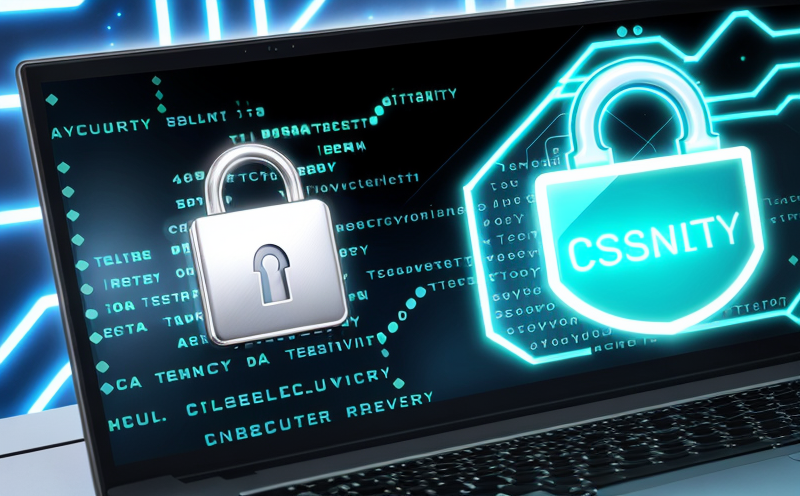ISO/IEC 29147 Coordinated Vulnerability Disclosure in Smart Devices
The International Organization for Standardization (ISO) and the International Electrotechnical Commission (IEC), through ISO/IEC 29147, provide a framework for coordinated vulnerability disclosure. This standard ensures that vulnerabilities are disclosed responsibly to minimize risks to users and systems. In the context of Smart Home & IoT devices, this service is crucial as these devices increasingly integrate with our daily lives, making them attractive targets for cybercriminals.
The process outlined in ISO/IEC 29147 involves several steps: identification, verification, communication, mitigation, and review. This coordinated approach ensures that vendors have time to address vulnerabilities before they are publicly disclosed, thus reducing the risk of exploitation. It also promotes transparency and trust within the industry.
For quality managers and compliance officers, this service offers a clear pathway for ensuring their products meet international standards. For R&D engineers, it provides a framework for secure development practices. And for procurement teams, it ensures that they are sourcing components from suppliers who adhere to these best practices.
The standard is particularly important in the IoT space where devices often have limited processing power and memory. Ensuring robust security measures during the design phase can prevent costly recalls and potential data breaches.
The ISO/IEC 29147 process starts with vulnerability identification, which involves scanning for known vulnerabilities or conducting code reviews to identify new ones. Verification ensures that these identified issues are indeed vulnerabilities rather than false positives. Once verified, communication between the vendor, researcher, and other stakeholders must occur in a coordinated manner.
Mitigation involves patching the identified vulnerabilities, while review assesses whether the vulnerability has been adequately addressed. This cycle of identification, verification, communication, mitigation, and review is critical for maintaining secure IoT devices.
The standard applies to various types of smart devices including home automation systems, wearable technology, and connected appliances. By adhering to ISO/IEC 29147, manufacturers can ensure their products are resilient against cyber threats while fostering a culture of security within the industry.
Implementing this standard also helps in complying with regulatory requirements such as GDPR for data privacy and various national cybersecurity policies. It ensures that companies stay ahead of potential risks by proactively addressing vulnerabilities before they become exploitable.
The coordinated approach under ISO/IEC 29147 not only benefits the manufacturer but also enhances user trust. Users can be confident that the products they purchase are secure and reliable, reducing the likelihood of data breaches or other security incidents.
Benefits
The implementation of ISO/IEC 29147 in Smart Home & IoT device testing offers numerous advantages:
Reduces risk by ensuring vulnerabilities are disclosed and addressed before public disclosure.
Promotes transparency and trust within the industry, fostering a culture of security.
Aids in compliance with regulatory requirements such as GDPR for data privacy.
Supports secure development practices, which are crucial for IoT devices due to their limited processing power and memory.
Enhances user trust by ensuring products are secure and reliable.
Fosters a proactive approach to security, reducing the likelihood of costly recalls or data breaches.
By adhering to this standard, companies can ensure their products meet international standards, thereby gaining a competitive edge in the market. This not only enhances brand reputation but also ensures long-term customer loyalty.
Competitive Advantage and Market Impact
The adoption of ISO/IEC 29147 can significantly enhance a company's competitiveness in several ways:
Firstly, it demonstrates a commitment to security, which is increasingly becoming a critical factor for consumers when purchasing smart devices. In an age where data breaches and cyberattacks are common occurrences, customers value companies that prioritize security.
Secondly, compliance with this standard can lead to reduced risk of legal action and financial losses due to unauthorized access or data breaches. This not only saves money but also avoids potential damage to the company's reputation.
Thirdly, adherence to ISO/IEC 29147 can help companies stay ahead of competitors by ensuring they are addressing vulnerabilities before others do. This proactive approach can differentiate them in a crowded market and attract more customers.
In terms of market impact, companies that implement this standard are likely to see an increase in customer satisfaction and loyalty. They may also experience higher sales volumes as consumers trust their products more. Additionally, the standard can lead to increased investment from stakeholders who recognize the value of security measures.
The standard's focus on coordinated vulnerability disclosure ensures that all parties involved—vendors, researchers, and end-users—are aligned in addressing security issues. This collaborative approach not only enhances security but also fosters a sense of community within the industry.
Use Cases and Application Examples
| Use Case | Description |
|---|---|
Vulnerability Identification in Home Automation Systems |
An example of using ISO/IEC 29147 in the Smart Home sector involves identifying vulnerabilities in home automation systems. This process ensures that any potential security risks are addressed before they can be exploited. |
Data Privacy Testing for Wearable Devices |
In the wearable technology space, ISO/IEC 29147 is used to ensure data privacy. This involves testing devices to ensure that personal information remains secure and is not exposed to unauthorized parties. |
Secure Development Practices for Connected Appliances |
The standard can also be applied in the development of connected appliances, ensuring that security measures are integrated from the initial design stage. |
Vulnerability Disclosure Coordination |
This involves the coordinated disclosure of vulnerabilities between vendors and researchers. This ensures that all parties involved are aware of the issues and can work together to mitigate them. |
Testing for IoT devices in the Smart Home environment to ensure secure communication protocols.
Data encryption testing to protect sensitive information within connected devices.
Access control testing to prevent unauthorized access to smart home systems.
These examples illustrate how ISO/IEC 29147 can be applied in various sectors of the Smart Home & IoT industry. By adhering to this standard, companies can ensure their products are secure and reliable, thereby gaining a competitive edge in the market.





